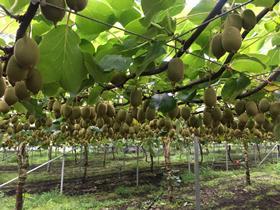
Joining the citrus orchards of Jeju Island off Korea’s south coast will be an additional 200ha of Gold3 Zespri kiwifruit.
The Gold3, which was allocated for licensing in early 2018, isn’t in production mode yet as Zespri solidifies the right partnerships for achieving its quality and productivity targets.
Min Dle Le, Zespri’s supply manager in Korea, said the extra allocation was approved to meet market demand in the Asian nation, and will be slowly released over the next five years.
“The primary focus is on expanding Jeju production before developing new growing regions given that we know the region well and know that Gold3 can thrive in Jeju,” said Min.
“Focusing on the development of one area also allows Zespri to concentrate its resources to optimally support the planned expansion and provide ongoing commercial, technical and extension support.”
Not only that, but Min points out the expansion will also help to leverage Jeju Island as a producer.
“The average orchard size today in Korea is 0.6ha. As we move forward we are encouraging larger size orchards so that economies of scale can be realised which will help to ensure sustainable returns to growers over the long term.”
Stabilising returns for growers is not unfamiliar when it comes to gold kiwifruit. Despite the category’s unstable past battling disease (Psa), it has a history of soothing the economy on Jeju Island.
In 2004, the fruit was introduced as an ideal relief to the local citrus industry, which was reaching a saturation point as volumes increased, lowering the price.
Despite turmoil, Min noted that the Hallabong variety of citrus fetched a good price for a while still. However low production volumes and a decrease in market price has made it less attractive of late.
Despite its saviour-like facade, Min said gold kiwifruit was predominantly brought in to help meet Zespri’s 12-month supply strategy and foster mutual agricultural cooperation between Korea and New Zealand.
“Currently, the total number of contracted growers now amounts to 163 throughout Jeju Island and 14 in the mainland,” said Min.
Starting out with Hort16a vines planted up until 2007, growers on the island are now transitioning to Gold 3. The change-over has been happening since 2016 but is still yet to be completed.
See more on Korean suppliers in the November edition of Asiafruit magazine






No comments yet